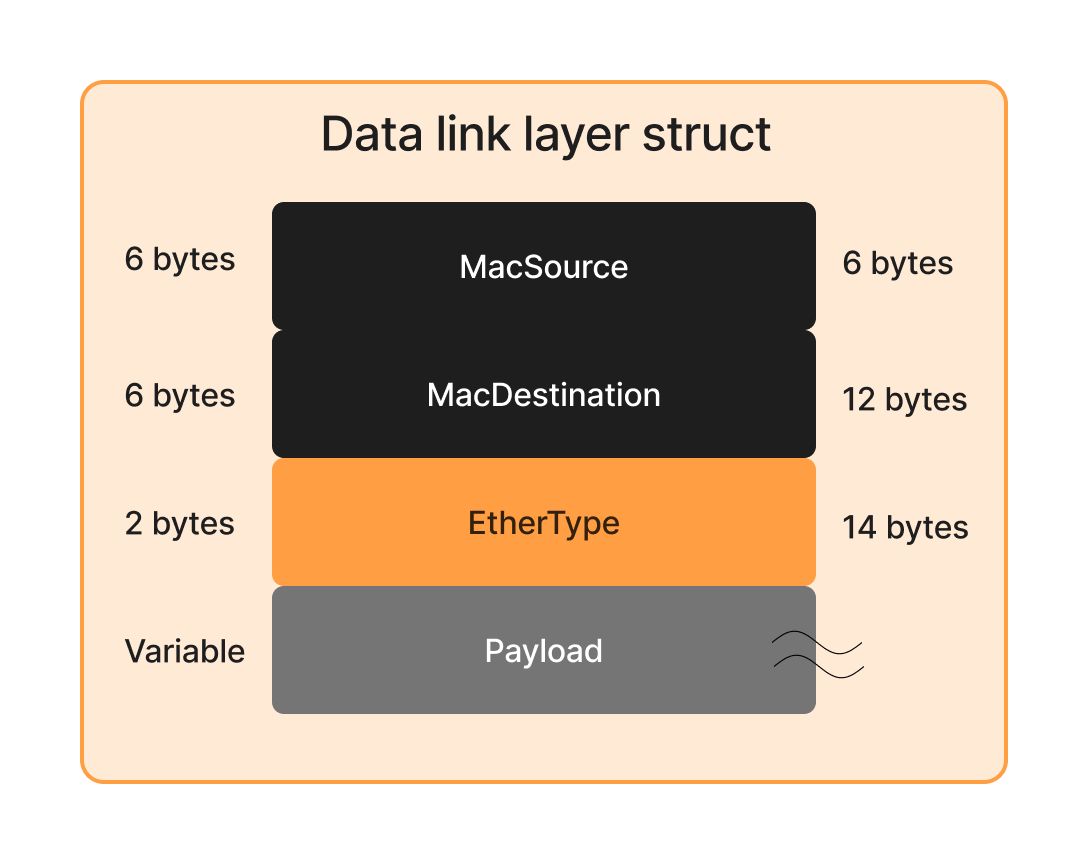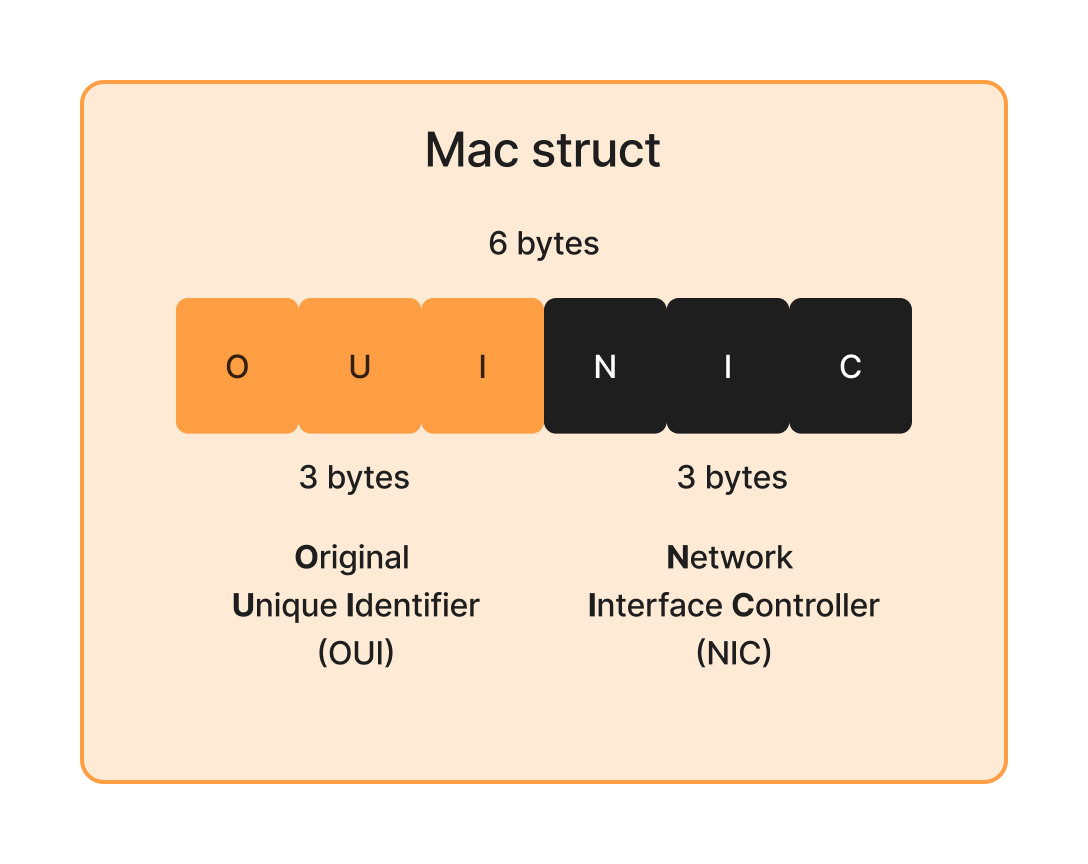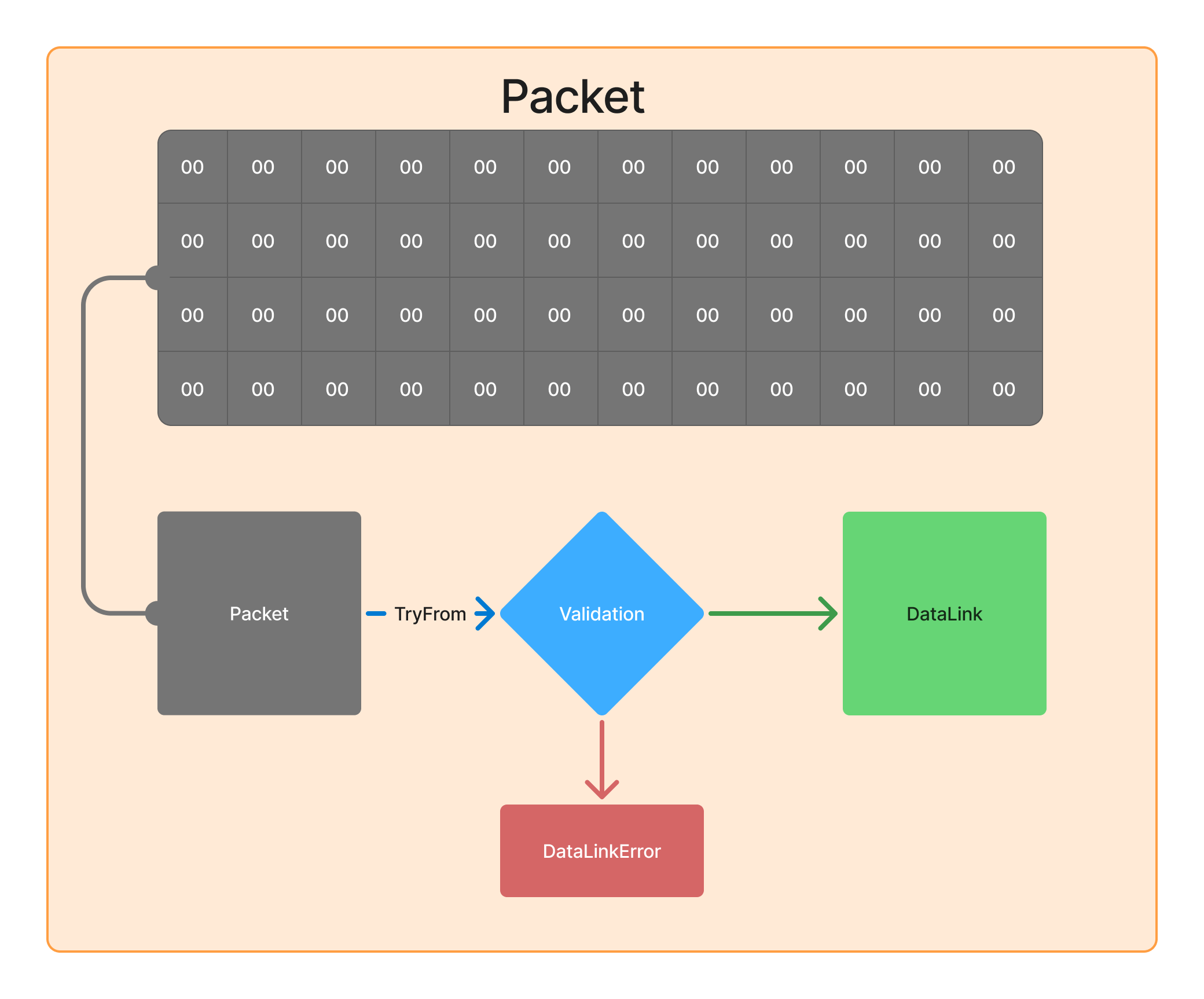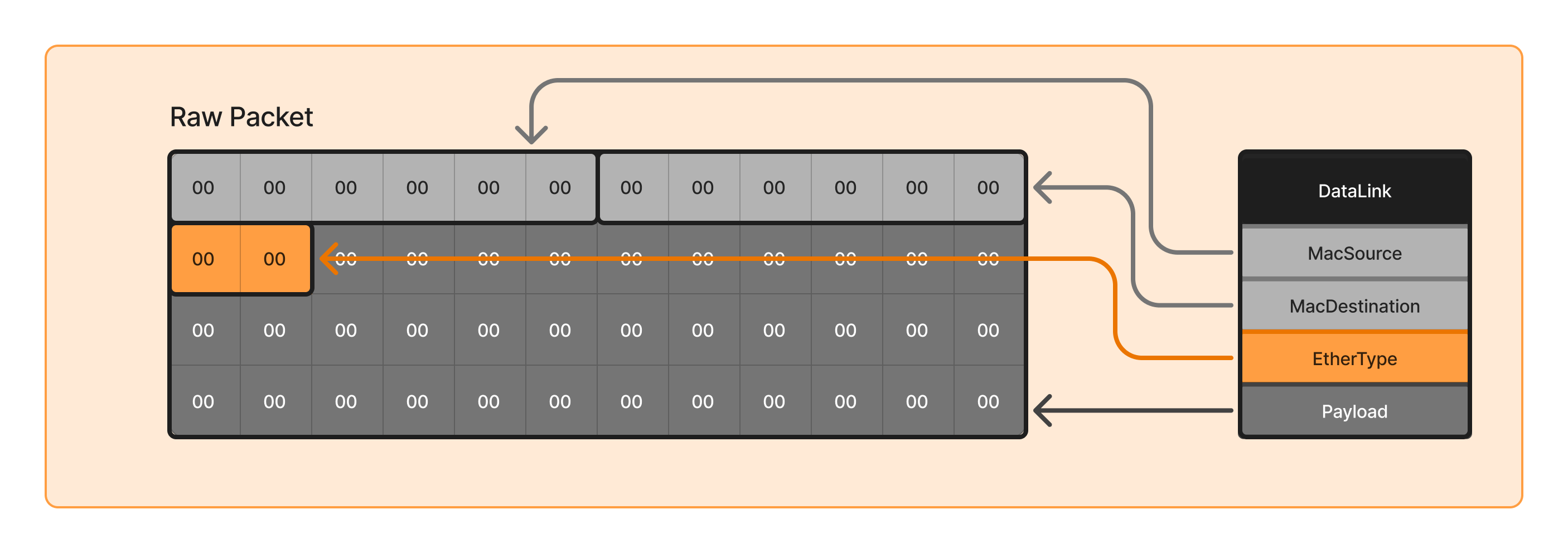Chapter 1
Parsing the Data Link Layer from a Raw Packet
Understanding how to parse the Data Link Layer from raw packets is a crucial step in network packet analysis. The Data Link Layer provides essential information such as MAC addresses, Ethertype, and payload extraction. This section explains the approach I took to implement the DataLink structure parsing.
🧩 Understanding the Data Link Structure
The Data Link Layer is responsible for frame-level communication between devices on the same network segment. In an Ethernet frame, the structure is as follows:
 The main components are:
The main components are:
- Destination MAC Address (6 bytes) - The unique physical identifier of the receiving network hardware.
- Source MAC Address (6 bytes)
- Ethertype (2 bytes) – Determines the protocol encapsulated in the payload.
- Payload (Variable length) – Contains the encapsulated network-layer packet (ipv4, arp, etc ...).
Breaking Down the MAC Address Structure
To parse MAC addresses correctly, we need to ensure that:
- They are always 6 bytes long.
- They are formatted properly for readability.
- We extract Organizationally Unique Identifiers (OUI) to identify the manufacturer.
MAC Address Structure:

Breaking Down the Ethertype Field
The Ethertype is a 2-byte field that defines the type of payload carried by the frame.
📌 Key Considerations:
- Extract the 2-byte big-endian value.
- Map well-known Ethertypes (IPv4, IPv6, ARP, etc.).
- Allow handling of unknown protocols without failure.
📌 Example of Well-Known Ethertypes (IEEE Standard Correspondence Table):
| Ethertype (Hex) | Protocol |
|---|---|
0x0800 | IPv4 |
0x86DD | IPv6 |
0x0806 | ARP |
0x8100 | VLAN Tagging |
📌 Steps Taken to Parse the Data Link Layer
To correctly extract this information, I followed these key steps:

Validations
While parsing, I implemented validations to ensure the raw packet is coherent.
📌 Validations Performed:
✅ Packet Minimum Length Check – Ensure the packet is at least 14 bytes (MAC_DST + MAC_SRC + Ethertype).
✅ Macaddress Minimum Length Check – at least 6 bytes.
✅ etherthype ceherence – if ethertype is ipv4 or ipv6 the payload can't be empty.
Structuring the Parsed Packet
After extracting all components, I structured the parsed frame in a clear format. This makes it easier to analyze, debug, and process packets dynamically.
📌 Why Structure Matters?
- Improves readability of parsed data.
- Makes it easier to extract key information.
- Supports future protocol extensions.

🚀 Conclusion
Parsing the Data Link Layer requires careful validation and structured extraction. By following a modular approach:
- MAC addresses are extracted safely.
- Ethertype is correctly mapped.
- Payload validation prevents out-of-bounds errors.
- The structure is extensible for future protocols.
This foundational parsing is crucial for higher-layer analysis, such as decoding IP, TCP, UDP, and application-level protocols.
🚀 Next Steps: Exploring network-layer parsing (IPv4/IPv6)!